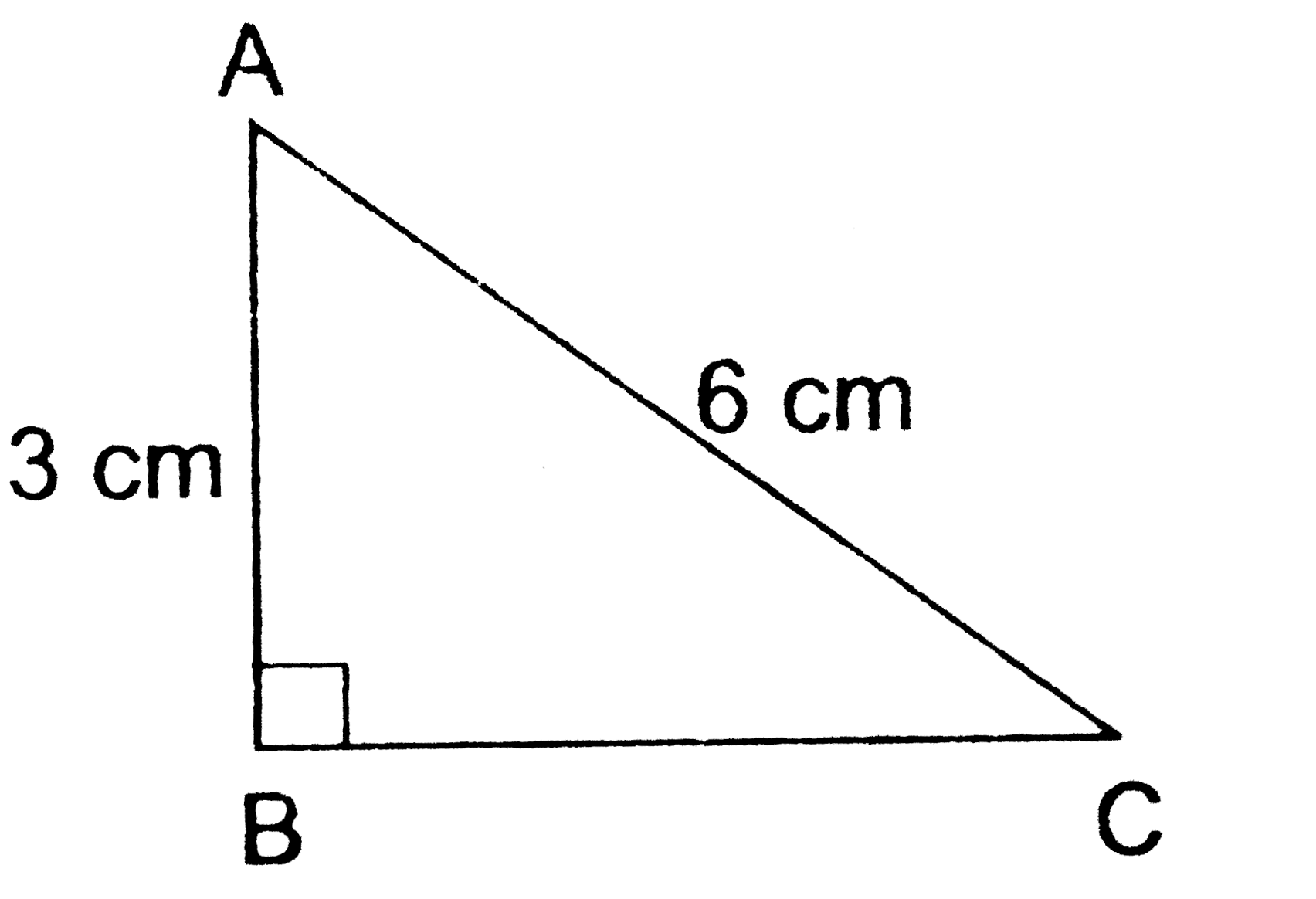If in ΔABC,∠B=90∘,AB=6√3 and AC=12cm, find BC.
5 cm
6 cm
7 cm
8 cm
The correct Answer is:B
To solve the problem, we will use the Pythagorean theorem, which states that in a right-angled triangle, the square of the hypotenuse (the side opposite the right angle) is equal to the sum of the squares of the other two sides.
Given:
- Triangle ABC with angle B = 90°
- Side AB = 6√3 cm
- Side AC (hypotenuse) = 12 cm
- We need to find side BC.
1. Identify the sides of the triangle:
- In triangle ABC, angle B is the right angle.
- AB is one of the legs (6√3 cm).
- AC is the hypotenuse (12 cm).
- BC is the other leg, which we need to find.
2. Apply the Pythagorean theorem:
According to the Pythagorean theorem:
AC2=AB2+BC2
Substituting the known values:
122=(6√3)2+BC2
3. Calculate the squares:
- Calculate 122:
122=144
- Calculate (6√3)2:
(6√3)2=62⋅(√3)2=36⋅3=108
4. Set up the equation:
Now substituting these values back into the equation:
144=108+BC2
5. Isolate BC2:
To find BC2, subtract 108 from both sides:
BC2=144−108
BC2=36
6. Find BC:
Take the square root of both sides:
BC=√36=6 cm
Final Answer:
The length of side BC is 6 cm.
- Triangle ABC with angle B = 90°
- Side AB = 6√3 cm
- Side AC (hypotenuse) = 12 cm
- We need to find side BC.
- In triangle ABC, angle B is the right angle.
- AB is one of the legs (6√3 cm).
- AC is the hypotenuse (12 cm).
- BC is the other leg, which we need to find.
According to the Pythagorean theorem:
AC2=AB2+BC2
Substituting the known values:
122=(6√3)2+BC2
- Calculate 122:
122=144
- Calculate (6√3)2:
(6√3)2=62⋅(√3)2=36⋅3=108
Now substituting these values back into the equation:
144=108+BC2
To find BC2, subtract 108 from both sides:
BC2=144−108
BC2=36
Take the square root of both sides:
BC=√36=6 cm
The length of side BC is 6 cm.
Topper's Solved these Questions
- BOOK - EDUCART PUBLICATIONCHAPTER - SAMPLE PAPER - 3EXERCISE - SECTION-C10videos
SAMPLE PAPER - 3
- BOOK - EDUCART PUBLICATIONCHAPTER - SAMPLE PAPER - 3EXERCISE - SECTION-C10videos
SAMPLE PAPER - 3
- BOOK - EDUCART PUBLICATIONCHAPTER - SAMPLE PAPER - 11EXERCISE - SECTION-C10videos
SAMPLE PAPER - 11
- BOOK - EDUCART PUBLICATIONCHAPTER - SAMPLE PAPER -5EXERCISE - SECTION-C11videos
SAMPLE PAPER -5
Similar Questions
If in ΔABC,∠B=90∘,AB=6√3 and AC = 12, find BC.
View SolutionIn ΔABC,∠B=90∘ , if AB=5cm,BC=12 cm , then find the vlaues of the following :
(a) Sin A
(b) Cos A
cot A
cosec C
( e) sec C
tan CView SolutionIn right ΔABC, ∠B=90∘, AB=3cm and AC=6cm. Find ∠A.
 View Solution
View SolutionIn ΔABC,∠B=90∘,∠A=30∘,b=20cm, find a and c.
View SolutionIn ΔABC,∠B=90∘,AB=5,BC=12, then find the length of median drawn from point B to side AC.
View SolutionSee the gven figure. In ΔABC,∠B=90∘,∠A=30∘,AC=14, then findAB and BC.
View SolutionIn a ΔABC,∠B=90∘andAC=8√2. If AB=BC, then find AB.
View SolutionIn ΔABC,∠B=90∘ , AB = 8, BC = 6 and BD is a median . Find / (BD).
View SolutionIn ΔABC,
∠C=90∘,
∠B=60∘,
∠C=6. Find AB.View SolutionIn an isosceles ΔABC if ∠A=90∘ and AB=AC, find ∠B and ∠C.
View Solution

